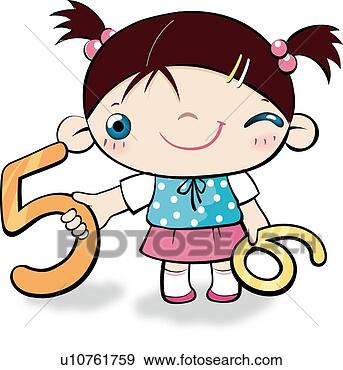Math Is Fun Forum
You are not logged in.
- Topics: Active | Unanswered
Pages: 1
#1 Re: Puzzles and Games » Add 13 more and post it forever. » 2010-06-03 05:26:47
skymus: Your avatar is simply smashing!!!
Animated avatars of ZHero and bobbym encouraged me to find a dynamic one
_________________________
7371 n = Post # = 567
Let's play the numbers as finite series:
In finite series , where d = X2 - X1
In our case we know k = 566 numbers and want to find 567th which is k+1 = 567, d = 26 - 13 = 13:
and
To celebrate an equation of the 5-year old kid 1+ 3 + 5 = 3*3 we play it for 13:
#2 Re: Puzzles and Games » Add 13 more and post it forever. » 2010-06-02 03:21:35
7306, n = Post # = 562
Let play the numbers as
Let's come back for a minute to 5-year old discovery 1 + 3 + 5 = 3*3
We explored it in a separate topic: 1+3=2^2 etc. and came to the following:
X1 + X2 + X3+
+ Xn = a * b in the post,
where a = (X1 + Xn) / 2, b = n.
In finite series X(n+1) = X1 + n * d, where d = X2 - X1
In our case we know k = 561 numbers and want to find 562th which is k+1 = 562, d = 26 - 13 = 13:
and
Few hands-on examples:
Ex: 1 + 3 + 5 = (1 + 5) / 2 * 3, n = 3, X(n+1) = 1 + 3 * 2 = 7
Ex: 3 + 6 + 9 + 12 = (3 + 12) / 2 * 4, n = 4, X(n+1) = 3 + 4 * 3 = 15
Ex: 13 + 26 + 39 + 52 + 65 = (13 + 65) / 2 * 5, n = 5, X(n+1) = 13 + 5 * 13 = 78
![]()
![]()
![]()
A SLICE OF PI
******************
3.14159265358979
1640628620899
23172535940
881097566
5432664
09171
036
5
from Math Humor
#3 Re: Puzzles and Games » Add 13 more and post it forever. » 2010-06-01 10:19:57
7254 n = Post# = 558 (see top right)
![]()
![]()
![]()

Pascal Triangle
#4 Re: Puzzles and Games » 1+3=2^2, 1+3+5=3^2, 1+3+5+7=4^2 etc. » 2010-06-01 06:29:17
Do you remember...
1
Roll # = (∫x³dx)-¹ = ?
0
![]() We still need one more roll ... Anybody wants to give it a try?..
We still need one more roll ... Anybody wants to give it a try?.. ![]()
P.S. You may use the table to find ![]() :
:
1
(∫x³dx)-¹ = ?
0
#5 Re: Puzzles and Games » 1+3=2^2, 1+3+5=3^2, 1+3+5+7=4^2 etc. » 2008-01-28 09:29:02
![]()
So, Post #12 defined the game out of 5 rolls.
The number to reach and overcome is Total = 82.
Until this moment ![]() gave us the following rolls:
gave us the following rolls:
Roll #1 = 6: 1 + 3 + 5 + 7 + 9 + 11 = 6 * 6 in Post #13
Roll #2 = 3: 1 + 3 + 5 = 3 * 3 in Post #18
Roll #3 = 4: 1 + 3 + 5 + 7 = 4 * 4 in Post #19
Total = 36 + 9 + 16 = 61
We need two more rolls!
Today we will Roll #4 = ...
Ready, Set and Ready, Go: . . . 5
Thank you, ![]() !
!
Thus, Roll #4 = 5: 1 + 3 + 5 + 7 + 9 = 5 * 5
Total: 61 + 25 = 86
![]()
![]()
![]()
![]()
![]()
Can Anybody roll the dice for the last Roll #5? ![]()
#6 Re: Puzzles and Games » 1+3=2^2, 1+3+5=3^2, 1+3+5+7=4^2 etc. » 2007-11-23 13:23:41
![]()
![]()
![]()
Winnie the Pooh: Hellooooooo.... Is anybody at home??????
![]()
![]()
Rabbit: No, NOBODY!
...
![]()
Winnie (to himself): if somebody says NOBODY, than it means there should be somebody.
_______________________________________________________________
Winnie:
Can Anybody Roll the Dice?
![]()
![]()
![]()
#7 Re: Puzzles and Games » 1+3=2^2, 1+3+5=3^2, 1+3+5+7=4^2 etc. » 2007-10-02 12:51:24
So, Post #12 defined the game out of 5 rolls.
The number to reach and overcome is = 82.
Until this moment ![]() gave us the following rolls:
gave us the following rolls:
6: 1 + 3 + 5 + 7 + 9 + 11 = 6 * 6 in Post #13
3: 1 + 3 + 5 = 3 * 3 in Post #18
4: 1 + 3 + 5 + 7 = 4 * 4 in Post #19
We need two more rolls!
![]()
![]()
![]()
![]()
![]() CAN anybody ROLL the DICE?.... ANYBODY ? . . . .
CAN anybody ROLL the DICE?.... ANYBODY ? . . . . ![]()
![]()
![]()
![]()
![]()
Let's do the deal: you will roll the dice and I will count the numbers!
#8 Re: Puzzles and Games » 1+3=2^2, 1+3+5=3^2, 1+3+5+7=4^2 etc. » 2007-07-25 04:04:11
![]()
![]()
![]()
![]()
![]()
For previous case of Roll # = 4, the equality is:
1 + 3 + 5 + 7 = 4 * 4
![]() Do you remember?
Do you remember? ![]()
1
(∫x³dx)-¹ = 4 and thus Roll # = 4?
0
______________________________________
Ok, now is your turn. ![]()
May you roll a dice to give me your Roll #?
![]()
![]()
![]()
#9 Re: Puzzles and Games » 1+3=2^2, 1+3+5=3^2, 1+3+5+7=4^2 etc. » 2007-06-09 11:42:17
![]()
![]()
![]()
ok, ok. Let's do it together!
![]()
![]()
![]()
![]()
![]()
Find:
1
Roll # = (∫x³dx)-¹
0
![]()
Use the table to find it:
1
for (∫x³dx)-¹: (x^4/4)-¹ = 4/x^4 ??? Nope! See Mr. Franklin's corrective post below
0
It is:
1
for (∫x³dx)-¹ we plug 0 and 1 into formula as follows:
0
(x^4/4)-¹ ol¹ = [(1^4)/4 - (0^4/4)]-¹ = (1/4 - 0/4)-¹ = (1/4)-¹ = 4
![]()
![]()
![]()
![]()
![]()
Therefore:
1
(∫x³dx)-¹ = 4 and thus Roll # = 4
0
![]()
![]()
![]()
PS I've got too much pre-occupied with placing correct math symbols as x^4 and ∫
to miss on the flow of the calculation itself.
It is interesting that we have x³ ready to use here, which is x^3, but not the same for x^4.
Thank you, John, for interaction.
#10 Re: Puzzles and Games » 1+3=2^2, 1+3+5=3^2, 1+3+5+7=4^2 etc. » 2007-05-16 07:46:20
![]()
![]()
![]()
For Roll # = 3 the equality is: 1 + 3 + 5 = 3 * 3.
![]()
![]()
![]()
________________________________________________
![]()
![]()
![]()
![]()
![]()
Use the table to find ![]() :
:
1
Roll # = (∫x³dx)-¹
0
![]() Anybody give it a try?..
Anybody give it a try?.. ![]()
#11 Re: Puzzles and Games » 1+3=2^2, 1+3+5=3^2, 1+3+5+7=4^2 etc. » 2007-04-26 10:08:05
For previous case of Roll # = 6, the equality is:
1 + 3 + 5 + 7 + 9 + 11 = 6 * 6
Next, let us say ![]() gives... Roll # = 3:
gives... Roll # = 3:
for Roll # = 3, write down the equality here:
1 + ... = 3 * 3
_______________________________________
![]()
![]()
![]()
Now let us have even more fun!
Let's say that ![]() gives...
gives...
1
... Roll # = (∫x³dx)-¹
0
First, count Roll# = __
Then, write down the equality here: _ + _ + ... = _ * _
Have fun ![]()
#12 Re: Puzzles and Games » 1+3=2^2, 1+3+5=3^2, 1+3+5+7=4^2 etc. » 2007-04-02 04:59:12
![]()
![]() gives... 6
gives... 6
for Roll # = 6, write down the equality here:
1 + ... = 6 * 6
![]()
#13 Re: Puzzles and Games » 1+3=2^2, 1+3+5=3^2, 1+3+5+7=4^2 etc. » 2007-03-21 04:14:56
Let's now play a little game: !![]() !
!
Come back to our original formula:
1 + 3 + 5 = 3*3
How many numbers are on the left side of the above equality? That's right: 3 !
Follow the same reasoning for other numbers as it is done below:
Example: roll a 6-sided dice to receive amount of number participants in the game:
e.g., Roll #1 = 5 and you make equality of 5 members. Always start from 1 and add 2 to get next number:
1 + 3 + 5 + 7 + 9 = 5*5
next: Roll #2 = 2, then 1 + 3 = 2*2
Roll #3 = 6, then 1 + 3 + 5 + 7 + 9 + 11 = 6*6
Roll #4 = 4, then 1 + 3 + 5 + 7 = 4*4
Roll #5 = 1, then 1 = 1*1
Game: roll 5 times and count the sum of all 5 rolls. The highest sum wins. ![]()
Let's count our 5 rolls: 25 + 4 + 36 + 16 + 1 = 82.
Roll your dice 5 times and try to reach that 82.
Your turn...give me your Roll #1 = ___ ![]()
#14 Re: Puzzles and Games » 1+3=2^2, 1+3+5=3^2, 1+3+5+7=4^2 etc. » 2007-03-13 03:45:13
Here is an example with rational numbers:
-10.9 - 9.8 - 8.7 - 7.6 = 4 * [(-10.9 + -7.6) / 2] = 4 * [(-18.5) / 2] = 4 * (-9.25) = -37
May you bring your example with rational numbers? ![]()
Now come back to our original puzzle!

Pascal Triangle
#15 Re: Puzzles and Games » 1+3=2^2, 1+3+5=3^2, 1+3+5+7=4^2 etc. » 2007-03-12 09:16:59
... breaking down the puzzle ![]() :
:

if ,
so we have that X1 + X2 + ... + Xn = a * b for a = n and b = (X1 + Xn)/2:
Now it is your turn:
2 + 4 + 6 = _ * [( _ + __ ) / 2] = _ * _ ?
Next, may you bring an example with integers? ![]()
The Lady Tasting Tea. How Statistics Revolutionized Science in the XXth Century by David Salsburg. The book author described discovery of the five-year-old in a few sentences (p.138, Chapter 14. THE MOZART OF MATHEMATICS). It does deserve our playfull minds... let's have fun and may even create a game on the numbers right here.
#16 Re: Puzzles and Games » 1+3=2^2, 1+3+5=3^2, 1+3+5+7=4^2 etc. » 2007-03-09 10:35:46
![]() - good discussion!
- good discussion!
Simple discovery is most often a deceptive one. It usually contains a surprise element. The magic is not in what it contains, but rather in what it doesnt. ![]()
1 + 3 + 5 = 3*3 what principle does it contain and what it does not?
If 1 + 3 + 5 = 3^2, does 2 + 4 + 6 = 4^2 ?... Obviously not.
Find the play (rule/formula) for multiples a and b, which would work for both:
for
and for .
When you find the a * b rule, then determine if the same rule plays out for
natural, whole, integers, rational, irrational numbers X1, X2,
in equation . Give some examples.

Now come back to 1 + 3 + 5 = 3*3 and see the hidden simplicity in it.
Mozart music also contains the highest level of deceptive simplicity,
which Albert Einstein recognized and adored in his violin journey.
#17 Puzzles and Games » 1+3=2^2, 1+3+5=3^2, 1+3+5+7=4^2 etc. » 2007-03-06 11:51:38
- skymus
- Replies: 24
Hi! Are you ready for a G A M E ? Go to Post #12 (see #s right) and have fun!![]() !
!
____________________________________________________
Here is a little preview:
This was discovered by 5 year old boy who later was called Mozart of mathematics.
What's his name?

Pages: 1